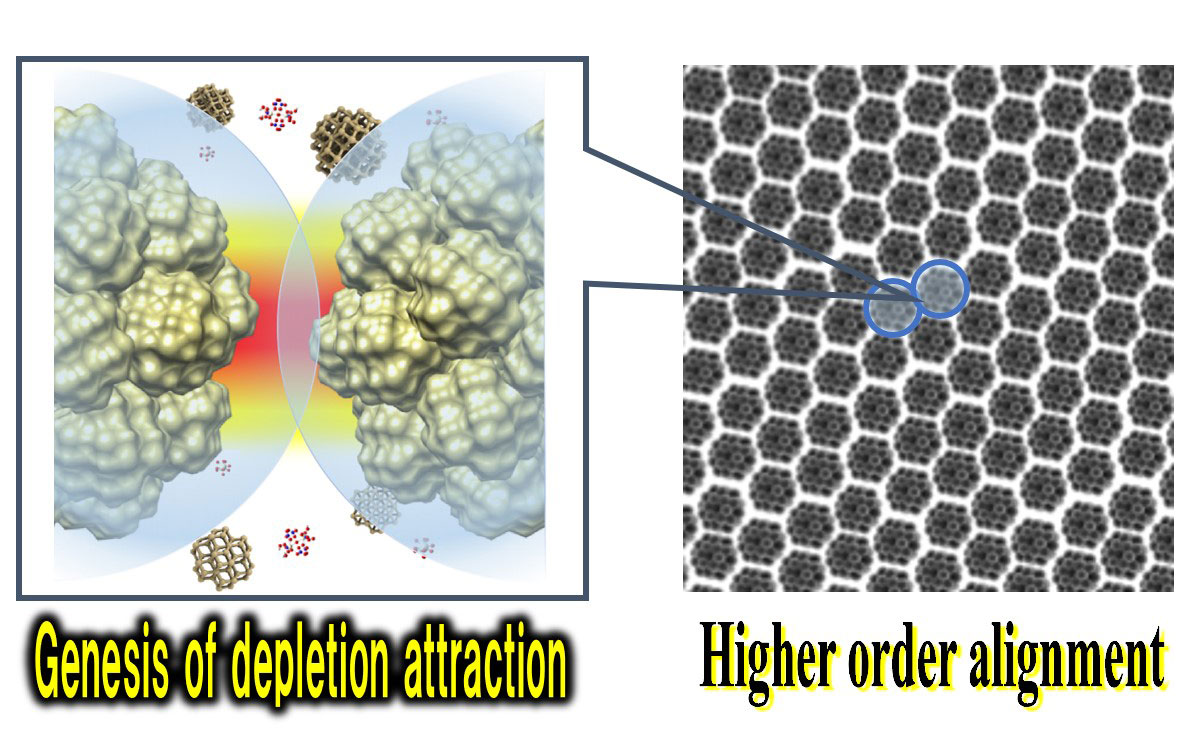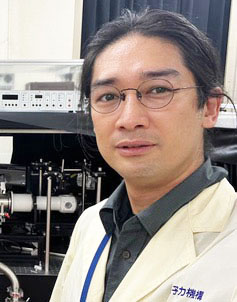Publication Date: March 31, 2025
Access counts:0
Hierarchization of Nanocrystal Aggregates via Depletion Attraction
-The Way to Advanced Ceramics Processing Technology-

Fig. 1 Repulsion by the electric double layer is balanced by depletion attraction of the
two-particle system, stabilizing the higher-order arrays
Owing to their superior heat, radiation, and corrosion resistance and high chemical stability, ceramics are adopted as functional materials in industry. Advanced ceramics use fewer metal resources than standard ceramics but are expensive. Therefore, a compact structural design that integrates functions within a limited size would increase the added value of these materials.
This study investigates the material manufacturing process of ceria (CeO2) exhaust-gas purification auxiliary catalysts using small-angle neutron scattering, small-angle X-ray scattering, and laser confocal differential interference microscopy. Small nanocrystals were observed to aggregate into large nanoparticles, forming a hierarchical structure. The dispersion and aggregation of these particles were stabilized by depletion attraction that counteracts the repulsive force of the electric double layer. Successful in situ observations revealed that the differently sized particles (primary and secondary particles) forming the hierarchical structure induce structural phase transitions. We report the first such transformation in a process not involving organic polymers (Fig. 1).
The proposed approach is expected to provide an integrated nanotechnology that controls the bonding pattern of regularly arranged fine particles, contributing to advanced manufacturing technology for new catalysts and optical materials requiring precise design.
This study was performed in collaboration with the University of Tokyo, Yamagata University, Hokkaido University, and the National Institutes for Quantum Science and Technology. We are grateful to the Advanced Science Research Center (ASRC), Japan Atomic Energy Agency (JAEA) for the REIMEI Research Program (2021-22) and Houga Research (2023-24). The study was supported by JSPS KAKENHI (JP20K05387 and JP23K17808) and MEXT KAKENHI (JP18KK0148, JP18H01921, and JP22H02010). Access to the experiment at SANS-J (C3-2) was provided by staff at Japan Research Reactor-3 (JRR-3) with the approval of JAEA (JAEA; Proposals 2021-D400, 2022-D586, and 2023-D857).
If you have any comments or feedback about this page, please click the button to share your thoughts with us.
